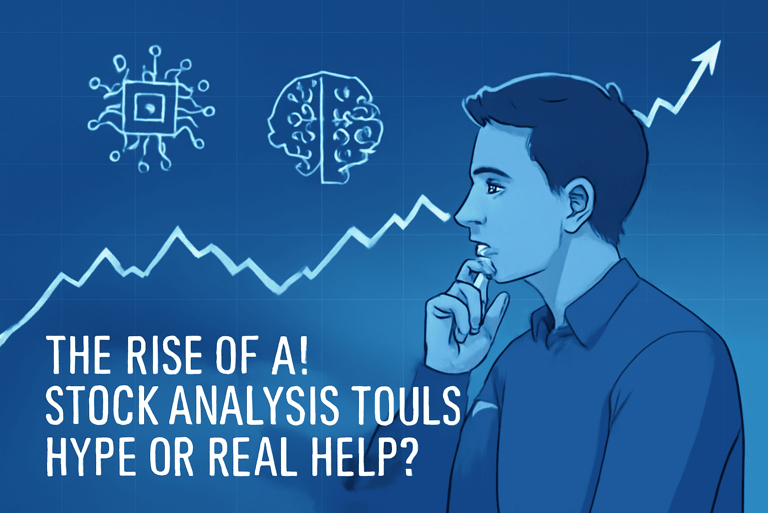The Rise of AI Stock Analysis Tools—Hype or Real Help?
Artificial Intelligence (AI) is transforming nearly every industry, and the world of stock market investing is no exception. In 2025, AI-powered stock analysis tools have gone mainstream, promising everything from superhuman pattern recognition to “beating the market” claims. But do these innovations truly empower investors, or are they more hype than help? Let’s break down the reality, technology, and practical verdict for today’s investors—especially for Gen Z and young entrepreneurs navigating their financial journeys.
TRENDINGSTOCK MARKETTECHAI
Neurotainment
8/14/20252 min read


What Are AI Stock Analysis Tools?
AI stock analysis tools use machine learning, natural language processing, and massive datasets to:
Analyze historical price trends and trading volumes.
Process market news, financial statements, and even social sentiment at lightning speed.
Generate signals, forecasts, or trading recommendations that claim to reduce research time and boost accuracy.
Popular platforms now include both robo-advisors for passive investors and advanced analytics dashboards for active traders.
Why Are They Trending?
Explosion of Data: Modern investors face overwhelming streams of data—AI can sift through earnings reports, tweets, and news headlines in seconds, surfacing insights that were previously impossible to spot unaided.
Retail Investor Boom: More young investors want hands-on control but lack hours for deep research. AI gives shortcuts to analysis, portfolio rebalancing, and risk management.
Accessibility: What used to be “hedge fund” tech is now available as app-based tools for everyday users, often with free trials or affordable subscriptions.
Hype: Promises and Pitfalls
Frequently Overheard Claims:
“Our AI predicts stocks with 90%+ accuracy.”
“You don’t need financial knowledge—just follow the signals.”
“Beat the SENSEX or Nifty using our one-click recommendations.”
The Reality Check:
No tool can guarantee profits. Even the best AI is only as good as its data and algorithms. Markets are volatile, affected by global events, and full of unpredictable human behavior.
False sense of security: Blindly following AI-generated signals, without understanding the market or your own risk profile, can lead to costly mistakes.
Quality varies: Not all tools are built equal—some focus on long-term trends, others on high-frequency trading, and many simply repackage old technical indicators as “AI insights.”
Real Help: Where AI Delivers Value Genuine Benefits for Investors:
Faster Research: AI can filter thousands of stocks for criteria like growth, value, or ESG compliance in seconds, saving hours of manual analysis.
Unbiased Data Processing: Machines are unaffected by fear or greed, helping prevent emotional decisions.
Pattern Recognition: Machine learning models can sometimes detect subtle signals that traditional screening misses, flagging new opportunities—and fraud risks—early.
Portfolio Optimization: Advanced tools tailor asset allocation to your personal goals, automatically rebalancing to stay on track.
Best Practices for Young Investors
Use AI as an assistant, not a replacement. Treat insights as a starting point, then validate recommendations with your own research or trusted expert opinions.
Learn the basics of investing. Understand risk management, diversification, and market cycles before relying on automation.
Start with sandbox or demo accounts. Before investing real money, test tools in simulation mode.
Expert Opinion: AI Tools Are Powerful—If Used Wisely
As a business student and aspiring entrepreneur, I see AI-powered stock analysis as a breakthrough for financial inclusion and educational empowerment. They level the playing field—giving students, side hustlers, and new investors access to data and insights once reserved for Wall Street pros.
But magic bullets don’t exist. The true winners will be those who use AI to elevate their decision-making, not outsource it completely. The best investors combine human intuition, critical thinking, and modern technology to build resilient, evolving strategies.


